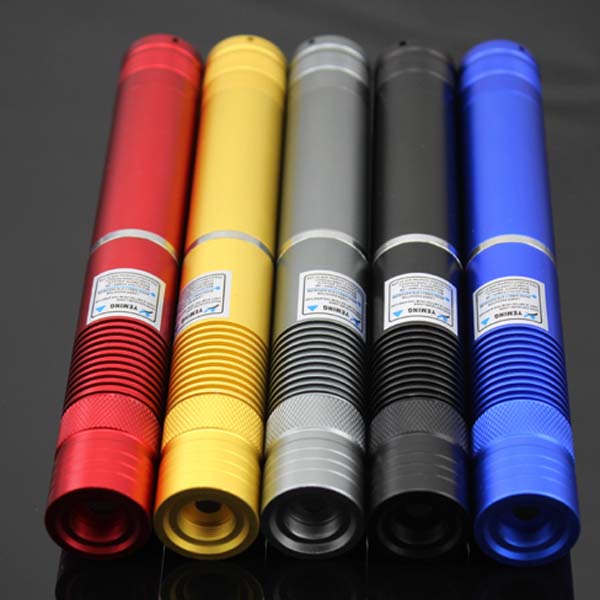wolesale laser pen
The roots of modern high end blue laser pen technology go back to a burst of innovation in the years following Theodore Maiman's demonstration of the ruby laser in 1960. Most major types of lasers were first demonstrated in those early years, but their technology has advanced greatly since then and today is on a roll.The next big step in solid-state lasers was laser action on the 1.06-micrometer line of neodymium. Neodymium had particularly good laser properties; developers studied many other crystalline hosts.
http://www.kitlaser.com/gatlin-100wm-green-8-in-1-multi-pattern.html
The first demonstration was Nd-doped calcium tungstate, demonstrated in 1961 by L.F. Johnson and K. Nassau at Bell Labs (USA). Later that year, Elias Snitzer at American Optical showed that a thin glass rod doped with neodymium also could lase. The first continuous-wave laser was demonstrated 12 December 1960 by Ali Javan, The experiment was a tough one and took nearly a year for others to replicate. But being able to generate a coherent beam made it possible to align flat-cavity mirrors parallel with each other in a Fabry-Perot cavity, making it easier to demonstrate other gas lasers.Semiconductor diode lasers were late bloomers. Robert Hall of the General Electric R&D Labs made the first one in 1962 and was followed within weeks by three other groups. It wasn't until 1970 that development of semiconductor heterojunctions allowed room temperature operation for a few seconds, with Zhores Alferov of Russia's Ioffee Institute narrowly beating Bell Labs. But 2000mW lasers pointer required cryogenic cooling and couldn't emit continuously.
Diode pumping and fiber-optic communications also helped fiber lasers into the mainstream. David Payne's experiments with erbium-fiber lasers at Southampton University (UK) led to the development of fiber amplifiers for the 1550-nm communications window, where they became part of the backbone of the global telecommunications network. Meanwhile, ytterbium-doped fiber lasers emitting have carved out a niche in industrial materials processing, delivering hundreds or thousands of watts.William Bennett, and Donald Herriott at Bell Labs. They used an electric discharge to excite a mixture of helium and neon to emit on the 1.15-µm line of neon.
There may be bumps in the road, but burning laser pointer innovation is charging ahead after half a century.The industry faces formidable challenges, including developing shorter-wavelength light sources to write finer details onto semiconductor chips. Research lasers are also amazingly sophisticated tools. Titanium-sapphire lasers, pumped by diode-pumped frequency-doubled neodymium lasers, can generate trains of femtosecond pulses which can be manipulated to become a femtosecond frequency comb, spanning more than an octave in frequency and able to measure optical frequencies with amazing accuracy. They are likely to become the basis of tomorrow's optical clocks and new generations of precision measurements.
Comparisons of the results are made between the three theories also. The effects of thermoelectric coupling parameter, two-temperature parameter on the displacement component, force stress, carrier density, and distribution of temperature for silicon (Si) medium have been illustrated graphically.Combinations of two-temperature and photothermal theories are obtained analytically.The effect of mechanical force during a photothermal process is investigated.LaserFest will recognize the accomplishments of the pioneers who made possible the discovery, development, and application of the 1000mW laser pen as well as inform students, educators, legislators, funding agencies, and the general public about the impact of the laser and the importance of scientific and technological innovation.
